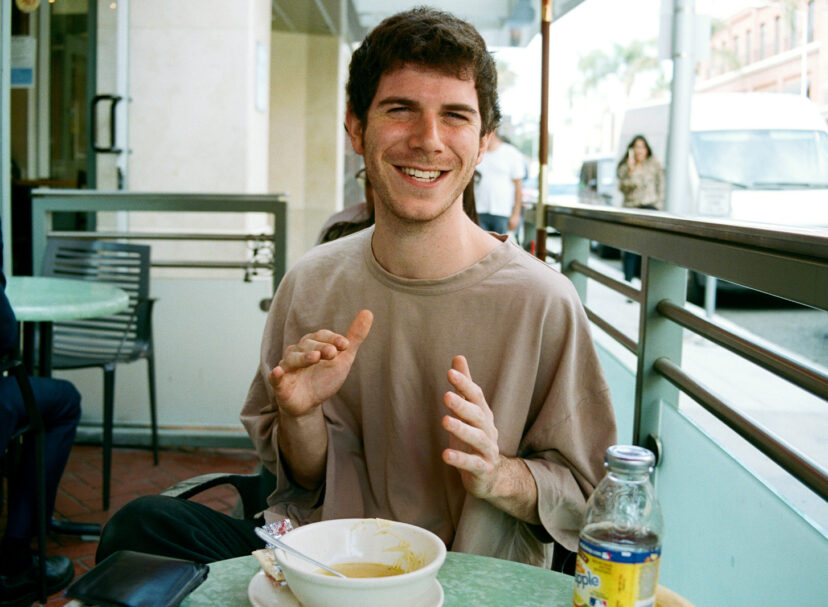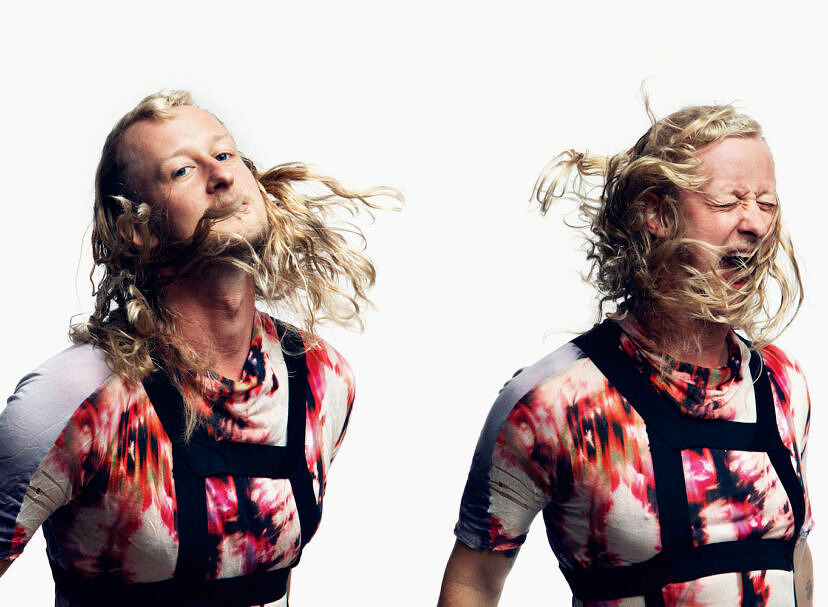The music of Anna Thorvaldsdottir sounds like the space between notes, just before melody meets rhythm, a place where atmosphere and mood prevail. As though the intention to strike the keys, or pluck the string, is suspended. At times it’s as though the notes are cautiously frozen in space, waiting to be played while other sounds stretch and expand, perpetuating the mood and enveloping the moment. It’s not easy music to describe. I asked her to help me out recently, when she called me via Skype from her home in Iceland. “Yeah, well, that’s really difficult. I kind of tend to describe it as ‘a flowing world of sound,’ slowly and organically moving structures of sounds with some lyrical atmosphere.” The folks at the prestigious Deutsche Grammophon record label call it classical music. They just released her latest record, Aerial.
As a composer, I don’t use the sounds of nature, I’m looking at nature and feeling nature’s force. It’s very inspiring when I write music.
I have a trifling bit of knowledge of contemporary classical music and a common appreciation of early music and classical music, but I’m a rabid fan of ambient music and its many connections, from Erik Satie to Brian Eno. I’ve also followed the ECM (Edition of Contemporary Music) label for many years, which has introduced me to the music of Henryk Górecki, Arvo Pärt, The Hilliard Ensemble, Kim Kashkashian and many others. But what is so unique about Thorvaldsdottir’s work is that the music’s pace is so well thought out. The performers play with such patience that the music almost sounds improvised, as if the musicians are lingering delicately over each phrase, slowly moving the air in the studio by pushing notes and sounds towards an unknown completion. The music feels untouchable, sounding like the first intimations of a new frontier of music yet to be discovered and watered down by a pop crossover audience. We live in a world where classical music has been marginalized, and I’m grateful for that because it’s pure, unadulterated art. Aerial is a slow burn that deserves full attention and requires a bit of patience. But given a chance, these spacious, atmospheric compositions deliver a bracing sense of catharsis.

I don’t get many classical records sent to me from labels, so I was pleasantly surprised when I listened to Aerial. To be honest, I’m not well versed in what you’re doing but I do know a lot about music that feeds off of space, atmosphere and mood. Are you in the classical music world, or are you composing outside of the genre?Well, I would say I’m inside of it–the contemporary classical music world.
How did the Deutsche Grammophon relationship come about?I was contacted by Universal Music Classics in New York. They have a number of labels and we all agreed that Deutsche Grammophon would be the best fit for the album.
It surprises me because it’s got a reputation of being a bit stuffy.
Yeah. It’s an old label with a lot of history. And I like it that they were able to put out this album.
How are things in Iceland?
It’s very windy and snowy at the moment. I like being here, it’s calm. I travel a lot so it’s conveniently located between the U.S. and Europe. And things are relatively good at the moment.
Are you in Reykjavik? There’s quite a music scene there. Obviously I know Sigur Rós, Múm, and I actually opened for GusGus at a festival years ago.
There is a lot happening. It’s very disproportionate to the number of people living here. Because it’s a small country everyone in music knows each other and not just within genres, everybody plays with each other. It seems like there’s always new bands popping up.
When your pieces are performed live, do you ever play with the ensemble?
Usually I’m not the performer. I often write for so many instruments, groups, orchestras or ensembles that have their own performers. I’m there with them to rehearse or to answer any questions.
Because your music is so atmospheric, does the sound change live?
The music is the same in the live performance because it’s all notated, it’s always the same notes being performed. But it’s always different with live performances; sometimes you notice details that have been a little hidden. But two different performances never really sound the same.
The use of percussion in your music is so unique, so interesting. It sounds like it’s used as a poetic expression. Why not use a melodic instrument to do that?
I’ve written for various instruments and a lot of melodic instruments as well. But I like percussion for various reasons. There are so many sounds and possibilities with percussion, and percussionists will play almost anything. There are so many different set ups. I tend to connect to that sound world. But I also have a lot of pieces for strings and winds; it’s just another aspect of what I do.
And how does nature play a part in your sound? I’ve read that it’s an integral part of your compositions.
For me it’s an inspiration, the design and function of nature. As a composer, I don’t use the sounds of nature, I’m looking at nature and feeling nature’s force. It’s very inspiring when I write music.
It definitely comes through in your music. The atmosphere breathes. At times I can hear and feel the space of the environment where the instruments are being played. The sound moves. How is that written? How do you translate that depth of atmosphere?
Well I write music notation on paper. And it’s just a skill you develop so that the sounds come across in notation for performers.
Where did you learn these skills? What is your background in classical music?
I was always making up songs when I was little and then I studied the cello when I was a teenager. I thought I was going to become a cellist. I really love the cello and I still play. As soon as I started writing music, I found that I needed to do it. That was when I was 19 years old. And when I started writing it down on paper, I found that I could store these sounds and ideas to communicate to others, and that was very liberating.
You play on some of the tracks on Aerial?
Yeah I play on one of them.
On “Trajectories.”
I play the piano through electronics.
That piece is from an art installation?
Yeah. It was collaboration. I did the music and then Sigurdur Gudjónsson did the visuals that are projected on three screens. The visuals are linked to the music they are in sync. And then there’s a live piano performance. We just did a performance in Vienna last weekend.
The pieces on the album date from the last few years. How did you select the compositions for the album? Did you feel that these particular 6 works fit well together on one album?
Yeah. Absolutely. My last album was released in 2011 and I decided to choose pieces that have been written since. And I found that they would make a nice unity as a whole on one album. It was about choosing the right pieces to put together.
And the album title is adapted from the song “Aeriality”?
I didn’t want to specifically name the album after a piece but it hints towards “Aeriality.”
What is a tone poem? I’ve heard that description applied to classical music that is less melody-driven. Is that an old way of applying descriptions to sounds?
It’s not a new thing. I’m trying to think how to describe it. It connects to when you want to have scenes described by music. Well let’s say you want to describe a flower, I think it might be referred to in that sense. It’s also been described as a programmatic music, when you’re trying to tell an actual story with music.
That’s interesting. I do think that the general public, or popular culture, tends to rely on melody for mood and to paint those pictures. Whereas your music is so far from that, I imagine some people find it very challenging.
Yeah. It might be. But it’s an opportunity to walk around in the music and the sound, to explore the structures and the perspectives from the details within the whole of the picture or sound.

